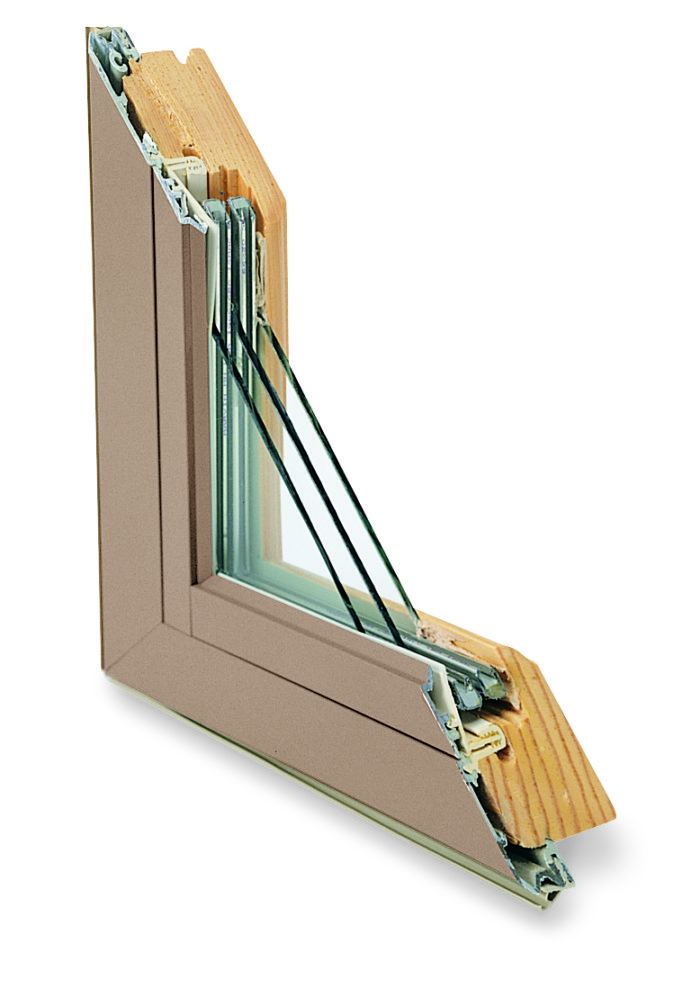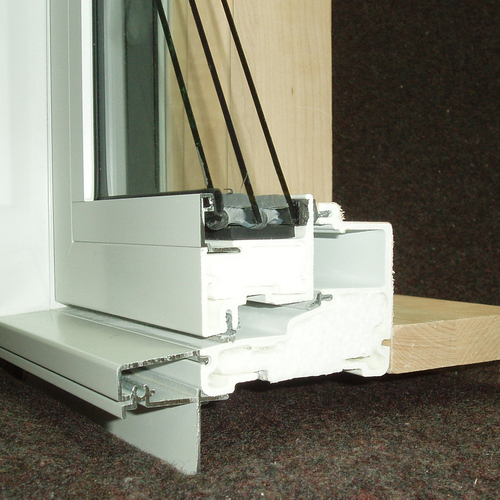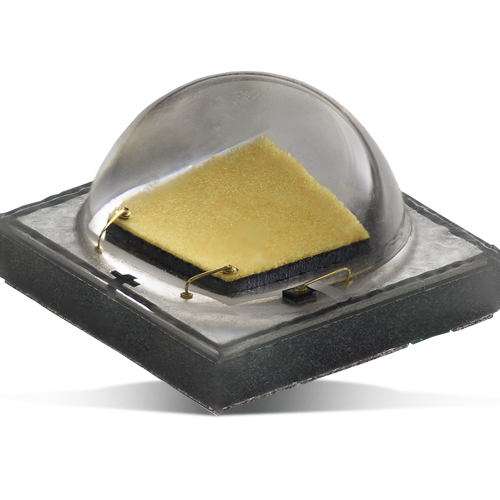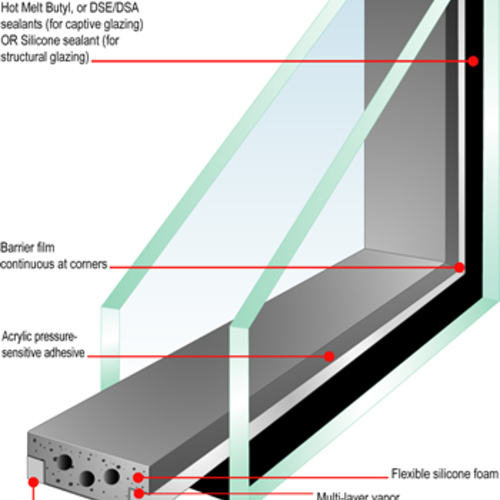Image Credit: Marvin Windows
Image Credit: Marvin Windows This chart shows the dramatic impact of the spacing between panes of glass in a window. With air in the cavity, the optimal spacing is about a half-inch.
Image Credit: Randi Ernst A triple-glazed window in Växjö, Sweden; triple glazing has been standard in the country since 1976.
Image Credit: Alex Wilson
I’ve been working for the past couple weeks on a report on windows — the latest in BuildingGreen’s series of special reports on green building (the last one covering insulation). This focus has reminded me just how much we expect of our windows and what an amazing job they do.
First, let’s look at everything that windows are expected to do: They provide us with views to the outdoors — whether of drifting snow on a frigid winter morning or kids playing in the backyard in mid-summer. They block the escape of heat and prevent condensation on the glass. They keep out wind-driven rain.
On the south side of our homes, especially in colder climates, windows are often expected to transmit beneficial solar heat, helping keep us warm. Yet, in warmer climates — and often on the west and east sides of our houses in more northern climates — we want windows to block the entry of unwanted solar gain.
Windows are usually expected to provide ventilation by allowing us to open them to channel fresh air into our homes — yet, we also want the same windows to be airtight when closed to keep out those cold winter drafts.
Windows often have to accommodate screens to keep out insects and other attachments to block sunlight or further reduce heat loss. Some windows also have to allow egress (escape from the house) in the event of fire.
All this, while being durable to the elements, long-lasting, low-maintenance, attractive, and — yes — affordable.
How are windows supposed to do all this?
They do it through some ingenious technologies and design features. I’ll highlight a few of the most important features below. I’ll follow with others next week:
Transparency and optical clarity
While the small-lite (twelve-over-twelve) windows in our 1780s home are certainly attractive — and treasured — they don’t provide a great view to the outdoors. The hand-blown and rolled glass distorts the view. Polished plate glass, developed perhaps 100 years ago, provided better visibility, but was very expensive.
The real revolution came in the 1950s with the development of float glass, in which molten glass is poured out on a bed of molten tin. I had the good fortune 15 years ago to visit a float glass factory in Toledo and watch this process in person. The molasses-like molten glass flowed in slow-motion from a 500-ton furnace heated by massive jets of natural gas onto the molten tin and then move along a quarter-mile-long lehr where the 12-foot-wide sheet of glass slowly cools and is cut into manageable pieces. The molten tin provides a mirror-smooth surface and produces highly transparent, distortion-free glass; no polishing is required.
Various coatings on the glass and additives in the glass affect the visible light transmittance. In hot climates, it is common for glass to be either tinted or have sun-blocking low-emissivity coatings. These sun-control windows can significantly impair visibility through them — as well as changing the appearance of the outside of a house. In commercial buildings where tinted glass has long dominated, it has become increasingly popular to use ultra-clear low-iron glass to provide glass that’s even clearer than standard glass. (I’ll say more about coatings next week).
Multiple layers of glass
The first strategy for reducing heat loss through windows was to add another layer of glass. This was first done with storm windows more than 200 years ago. The most basic storm windows — like those on my house — can be installed in the fall and removed in spring; more common today are triple-track storms with operable sash and screens. But starting in the 1940s and ’50s, manufacturers began producing insulated-glass units (IGUs in industry parlance) with two layers of glass separated by an air. Sometimes referred to as Thermopane glass, which was the trademarked name Libby Owens Ford (LOF) used for such glass when they introduced it to the U.S. market in the 1950s.
While one layer of eighth-inch-thick, clear glass insulates to about R-1, two layers separated by an air space insulate to about R-2 — doubling the insulation. Nearly all of that insulating value is provided by the air spaces, not the glass itself. Even with single glazing, the R-1 is provided almost entirely from the still air on each side of the glass. LOF’s early Thermopane glass had welded-glass edges, so the seal was extremely good. Andersen was an early adopter of this glass, and many of their early Thermopane windows are still working just fine more than 50 years later.
Other glass manufacturers used spacers and organic sealants to achieve the air space between layers of glass, and this approach eventually won out. Today, virtually all IGUs are made using spacers — usually aluminum channel, but sometimes stainless steel, butyl rubber, or silicone — that are held in place and sealed with highly durable sealants.
In the 1970s, manufacturers tried adding a third layer of glass to further increase the insulating value. This increased the R-value (at the center of the glass) to about R-3. American manufacturers generally had difficulties with this approach, because as they increased the weight of the windows they didn’t beef up the frames and hardware adequately. Problems ensued, and the industry shied away from triple-glazing.
In Europe, however, triple became very common. I was surprised when visiting Sweden a few years ago to learn that triple glazing has effectively been required by code since 1976. You simply don’t see new windows in Sweden that aren’t triple-glazed.
Thicker air spaces
As the pressure to provide better-insulating windows grew in the 1970s, glass manufacturers increased the thickness of the air space from a quarter-inch to about a half-inch. This change can yield a dramatic improvement in energy performance — up to 40% in some cases — without much additional cost. The benefit is achieved because less heat flow occurs via gas-phase conductivity — one of the modes of heat flow through windows.
With air spaces, the optimal thickness is about a half-inch. If the space is thicker than that, another mode of heat transfer — convection — begins increasing heat flow. This occurs because convective loops form in the air space. Finding the optimal air space thickness means finding a balance between gas-phase conductivity and convection.
The demand for thicker air spaces, unfortunately, spelled the doom for those welded-glass-edge windows that LOF produced. With thicker spaces, the stress on the edges of the glass increases, and thermal expansion and contraction causes breakage.
Next week we’ll look at a more significant innovation in window performance: low-emissivity coatings.
Alex is founder of BuildingGreen, Inc. and executive editor of Environmental Building News. To keep up with his latest articles and musings, you can sign up for his Twitter feed. The BuildingGreen Guide to Insulation Products and Practices is available from BuildingGreen.
Weekly Newsletter
Get building science and energy efficiency advice, plus special offers, in your inbox.
















17 Comments
Alex, very informative artticle, but question on spacers
Aren't metal spacers much less effective than warm edge or super spacers made from silicon or other non-metallic materials?
Impact of spacers
William,
Yes, indeed. The worst glazing spacers--aluminum channel--are still the most common. Stainless steel spacers with a thin cross-section are a lot better than aluminum (because of the lower conductivity of stainless steel as well as the thinner section), but as you note, the butyl rubber and silicone foam warm-edge spacers are the best at blocking heat loss.
As we make windows with glass that insulates better, the edges of that glass become more important.
Aluminum spacers
Oberon,
Thanks for your note.
If I'm mistaken and most IGUs today aren't made with aluminum spacers, I apologize; I thought aluminum still dominated the market and that the other types of spacers (stainless steel, butyl rubber, silicone) were less common. I'll try to find that out.
As for the illustration, I looked for a graph showing the effect of the air space thickness with clear glass, rather than low-e, but wasn't able to find that, so I used the low-e glazing configuration--but was hoping that readers would focus mostly on the impact of the spacing.
I've been following vacuum glass and wrote about it in 2009 (https://www.greenbuildingadvisor.com/blogs/dept/energy-solutions/vacuum-insulated-windows). I'll continue to follow and report as warranted.
comments
Alex,
Good blog, I enjoyed reading it and I am looking forward to the next installment on coatings and other options.
There are a number of innovations in the works for windows and IGU's (technically Insulating Glass Units rather than Insulated...but that's really picking nits since even in the industry most people refer to Insulated).
Vacuum glazing is a very interesting technology that I bring up only because you talked a little about the original thermopane windows with welded glass edges and there is a very common misconception that the original welded glass IG units were vacuum filled (or not filled - which makes more sense I suppose).
That was never true of course, at least not intentionally, but I hear or read now and then that they were vacuum glazed and that going to inserted spacers between the glass eliminated vacuum glazing.
You also mention that most IGU's are manufactured using aluminum spacers. Did you mean currently or did you mean since the beginning of IG fabrication using spacers? If you meant currently then I am curious where that information came from since I would be rather surprised if that were the case.
Considering the much maligned aluminum spacer it's interesting that the picture of the Swedish triple included at the end of the blog includes a couple of aluminum spacers....
The graph is also interesting because it compares air versus gas infill in a LowE coated IGU rather than in a clear glass IGU. I won't comment further since I suspect that may be part of the next blog.
Have a great day!
Oberon
Thanks Alex, great
Thanks Alex, great info.
Looking forward to the next installment.
Keck and Keck Solar Homes
Alex,
It might be a good follow up topic to discuss the original solar homes that Keck and Keck designed in the Chicago area in the late 1930's/early 1940's. These were demonstration homes that they designed for LOF to showcase their new double insulated glass. Pretty amazing for back then. LOF published 'how to' books in 1944 and 1947.
The homes were purported to be the first solar homes in 'modern' America and a subdivision that was designed by Keck shortly thereafter in Glenview, IL has been described as the 'first solar subdivision in America'.
There are some fairly amazing correspondence letters between Keck, LOF and Keck's developer client. The letters are from the State Historical Society of Wisconsin.
Response to Nathan Kipnis
Nathan,
Your post sent me to Google, where I looked up Keck and Keck. Interesting. Here are some links:
http://www.facebook.com/media/set/?set=a.10150154416622634.290366.164740302633&type=3
http://www.dailykos.com/story/2007/07/09/355768/-Old-Solar-160-Keck-and-Keck-Twentieth-Century-Modern
http://www.chicagobauhausbeyond.org/cbb/mission/keck.htm
Films as the interior glazing
As you note, clarity is very important when it comes to windows. I have recently installed Serious Windows in a project and I noted that when the sun is shining through the glazing at a shallow angle the internal window film forward scatters the light making the window look noticeably fogged. Have you or anyone else seen this ? Thanks.
Glass spacing
Hi Alex,
I'm enjoying this series on windows. Thank you!
You've raised a question I've puzzled over for a while: Does the chart showing optimal spacing between glass panes apply to IGU's using warm edge spacers? It does not specify which spacers were used to generate the data and I've wondered about this. Does it make sense that the internal convective currents between the panes could be lower in units with warm edge spacers because the temperature differentials between center and edge are lower?
The reason I ask is that 'those Germans' tend to build a much thicker IGU, even for the 2-pane windows. The typical 2-pane ones I've seen are just shy of one inch overall (24mm), including the glass thickness. The u-values they claim for the 2-pane glass are 0.19 BTU/hrft2F - typically better than our local c-o-g values. This may be due to a testing protocol difference in obtaining those u-values, but perhaps you can shed some more light? I'd love to know.
Spacing between the glass
Bronwyn,
See my blog that will go live tomorrow--on gas fills. I address why the German spacing is wider. It's all about the temperature at which windows are tested. The Germans assume a lower delta-T across the window. At a lower delta-T there's less convection that happens, so a thicker spacing is justified. For the vast majority of time (and places) in the U.S. the same argument holds true. A thicker spacing makes sense.
Insultated Glass optimal spacer size
If the delta-T is 30 deg F. ,inside air to out side air, what is the optimal air space?
Convective current breaks
I'm upgrading my solar collectors by adding double glazed 2 mil mylar "storms". The frames are wood. In the house, these are 1/2" thick and mounted inside. Works well.
Outside I have a vertical 200 SF of solar hot air, and a tilted 80 SF of solar hot water.
My question then is, should I add crossbraces, like the firestops in walls? What distance?
Would not the optimum spacing be greater for slanted glazing?
Note that polyester (mylar) needs UV protection, here it is supplied by the UV barrier on the Sun Tuf outer glazing
Response to Jeff Thies
Jeff,
Most solar collectors use single glazing, not double glazing. While a second layer of glazing helps retain heat at night and during cloudy weather, it reduces solar gain. Most energy calculations show that single glazing results in more heat collection and better performance than double glazing.
However, your system is unusual, and is unlikely to be cost-effective in any case. With such a large area of solar collectors, you may have reasons other than thermal performance to be pursuing the idea of double glazing.
Whether or not your home-made wood-framed solar collectors need cross braces is more of a structural question than a thermal performance question, it seems to me. There are many variables that lead me to believe that your Mylar layer will reduce rather than improve the thermal performance of your system, so the question of convective loops between the two layers of glazing seems to me to be a minor issue compared to more fundamental design issues.
Demise of Thermopane windows
I thought this series of short articles was very valuable. You made one historical claim that I'd like to see elaborated. This is that the thermopane window with the welded glass edge construction disappeared because its U-factor was inferior to that of units with thicker interpane spacings. The latter used alternative sealing systems based on adhesives and sealants that now dominate the market.
I'm just following up to find out if you're aware of references from the 1970s and 1980s about the decline of Thermopane and its technology. It's of more than historical interest, since many building owners are now confronting the replacement of organic seal IGUs that have failed. My limited experience suggests that the Thermopane units had a longer service lifetime than the competitive IGUs of that era, which agrees with the comment at the end of the post.
Thanks, Eric
Welded-edge IGUs
Eric, it is, in some ways, a real bummer that welded-edge IGUs disappeared from the market. I know a lot about this, as I helped write a business plan for a guy who was going to buy the last welded-edge IGU plant that LOF owned--back in the late-1980s or early '90s. This window maker had gotten LOF to fabricate low-e, krypton-filled IGUs. With krypton gas-fill the optimal glass separation is thinner than with air or argon, so it was a great fit. He was using these IGUs as replacement panels for historic windows; the IGUs were thin enough that he could modify the sashes to convert from single-glazed to double-glazed. Just after he had converted his whole operation to these IGUs, LOF let him know that they were closing the factory, and he pursued buying it.
The potential buyer backed out after a cold snap in New England with very low temperatures cracked some of his replacement windows that he had made with these LOF IGUs. So it might be that the use of low-e affected the glass temperatures in a way that made them prone to breakage (differential expansion)--and the loss of the technology isn't so bad. I believe that there is a manufacturer in Europe or Japan still using welded-glass-edge technology.
Note that with welded-edge IGUs, moreso than with organic seals, changes in elevation from point to manufacture to point of installation can cause problems--resulting in convex or concave conditions. With organic seals that can be addressed by shipping windows with separate bladders filled with the low-conductivity gas and a filler tube that is crimped, cut, and tucked into the seal after window installation--though Alpen Windows is the only company I know of that does that. With welded-edge IGUs that wouldn't be possible.
Welded edge IGUs
Thanks, Alex, for that quick - and very informative - reply!
One purely historical question that you may be able to answer. By the 1980s, was Thermopane being made with welded glass edges? I think the original, 1940s product used a glass-to-metal seal and soldering. The sealing technologies are parsed into three categories in some references: see the figure about 4 pages into this document: http://www.interpane.com/medien/service/Kap4_englisch.pdf
Welded edge IGUs
Eric,
This excerpt from the "Insulated glazing" listing on Wikipedia suggests that the original Thermopane(TM) IGUs were welded-glass-edge, not the glass-to-metal seal; that matched my own understanding. I don't know whether LOF used the tradename Thermopane to refer to their IGUs that did not have the welded-glass edges in later years.
I'm not familiar with the "soldered edge" IGU described in the PDF you sent a link to. I wonder if that's a technology that was used in Europe.
-Alex
From http://en.wikipedia.org/wiki/Insulated_glazing:
The insulating glazing unit, consisting of two glass panes bound together into a single unit with a seal between the edges of the panes, was patented in the United States by Thomas Stetson in 1865.[1] It was developed into a commercial product in the 1930s, when several patents were filed, and a product was announced by the Libbey-Owens-Ford Glass Company in 1944.[2] Their product was sold under the ThermopaneTM brand name, which had been registered as a trademark in 1941. The Thermopane technology differs significantly from contemporary IGUs. The two panes of glass were welded together by a glass seal, and the two panes were separated by less than the 0.5 inches (1.3 cm) typical of modern units.[3] The brand name Thermopane has entered the vocabulary of the glazing industry as the genericized trademark for any IGU.[citation needed]
Log in or create an account to post a comment.
Sign up Log in